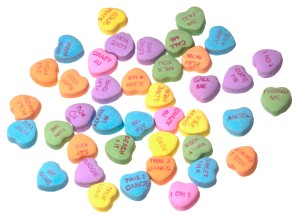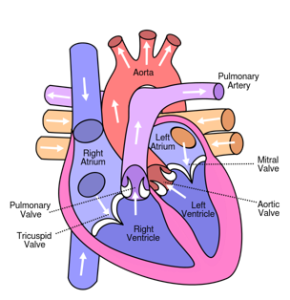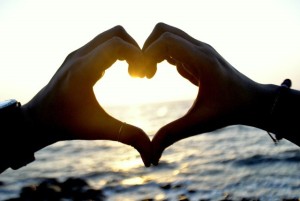
 Valentine’s Day is today and it’s incredibly common to see public places decorated with paper hearts and store shelves packed with heart-shaped candy. Hearts are a universal representation of love, but don’t let their simple facade fool you – everyone’s favorite cardiac organ has an interesting history and some amazing scientific features!
Valentine’s Day is today and it’s incredibly common to see public places decorated with paper hearts and store shelves packed with heart-shaped candy. Hearts are a universal representation of love, but don’t let their simple facade fool you – everyone’s favorite cardiac organ has an interesting history and some amazing scientific features!
Thousands of years ago, Aristotle described the heart as the seat of intelligence, motion and sensation as well as the center of vitality in the body and the source of nerves – a bit similar to how we describe the brain today. Aristotle believed that the heart produced so much innate heat in the body that surrounding organs, including the brain and lungs, existed simply to cool it. Although the heart may not be the center of vitality, its systematic method of pumping blood and its reaction to feelings such as love are truly amazing.
 The shape of your heart: The heart contains 4 chambers – the right and left atria and the right and left ventricles. The tricuspid valve controls blood flow between the right atrium and ventricle, while the mitral valve controls the blood flow on the left side. To pass the blood into circulation, the right ventricle uses the pulmonary valve to control blood flow into the pulmonary arteries while the left ventricle uses the aortic valve to control flow into the aortic arteries.
The shape of your heart: The heart contains 4 chambers – the right and left atria and the right and left ventricles. The tricuspid valve controls blood flow between the right atrium and ventricle, while the mitral valve controls the blood flow on the left side. To pass the blood into circulation, the right ventricle uses the pulmonary valve to control blood flow into the pulmonary arteries while the left ventricle uses the aortic valve to control flow into the aortic arteries.
Listening to a heartbeat:
If you listen to a heart through a stethoscope, you’ll no doubt recognize the “lub dub” sounds that signify the closing of the various valves. Heart valves ensure that blood flows in only one direction. “Lub” can be heard when the tricuspid and mitral valves close, while the “dub” comes from the aortic and pulmonary valves closing.
Pumping Blood:
For the heart to beat, both the atria and ventricles relax and fill with blood. When their relaxation ends, the atria contract and pump blood into the ventricles, and when the atria relax, the ventricles contract and pump blood out of the heart.
 So is there scientific evidence to support the common feeling of a racing heart when encountering someone or something you love? Well, yes. In these situations, the brain sends signals to the adrenal gland, which releases hormones such as adrenaline and norepinephrine. This rise in blood hormones results in an increased heart rate, or “flutter”!
So is there scientific evidence to support the common feeling of a racing heart when encountering someone or something you love? Well, yes. In these situations, the brain sends signals to the adrenal gland, which releases hormones such as adrenaline and norepinephrine. This rise in blood hormones results in an increased heart rate, or “flutter”!
Peer edited by Jonathan Susser
Follow us on social media and never miss a Love Inspired article:
———————————-